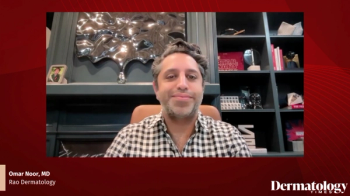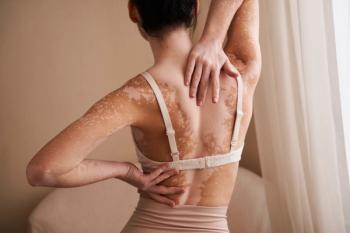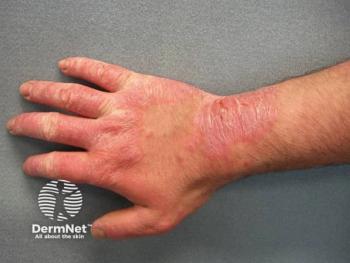
Immunosuppressed Patients Respond Well to Electrochemotherapy for Skin Cancer
Key Takeaways
- Electrochemotherapy is effective for immunosuppressed patients with nonmelanoma skin tumors, showing high response rates and minimal adverse effects.
- No significant difference in tumor response was observed between immunosuppressed and nonimmunosuppressed patients after six months.
High response rates and no systemic toxicity in multiple nonmelanoma skin tumors were observed in this vulnerable patient population.
New research has shown that electrochemotherapy is safe and effective for immunosuppressed patients with multiple nonmelanoma skin tumors.1 High tumor response rates with no systemic toxicity and few adverse effects were observed in this vulnerable patient population. The therapy’s efficacy was also evaluated and compared to nonimmunosuppressed patients, as the risk of developing skin tumors is higher in immunosuppressed patients, especially those who have undergone organ transplant surgery.
The prospective cohort analysis included 14 immunosuppressed (156 tumors, 82 target lesions) and 30 nonimmunosuppressed patients (183 tumors, 157 target lesions) with actinic keratoses (AKs), basal cell carcinomas (BCCs), and squamous cell carcinomas (SCCs). The immunosuppressed group included 4 women and 10 men with a mean age of 76 years. The nonimmunosuppressed cohort included 6 women and 24 men with a mean age of 72 years. All had a life expectancy of more than 3 months, and their Eastern Cooperative Oncology Group (ECOG) status was at least 1.
Participants were treated at the Department of Dermatology and Allergology in Szeged, Hungary, between 2016 and 2024. Each received electrochemotherapy using intravenous bleomycin through a CE-marked Cliniporator, based on the European Standard Operating Procedures of ECT (ESOPE) guidelines. They were then monitored every 3 months for data collection, patient questionnaires, and photographic evidence. Investigators evaluated tumor response, adverse effects, and quality of life in both groups.
Nonimmunosuppressed patients had a significantly higher tumor response rate 3 months after treatment (p = 0.001), according to Fisher’s exact test. After 6 months, however, no statistically significant difference was seen between the groups (p > 0.05). Electrochemotherapy was repeated in 6 of the immunosuppressed patients.
No systemic toxicity was observed in either cohort, with no significant difference between the 2 groups after 3 and 6 months (p > 0.05). The most common adverse events were suppuration, hyperpigmentation, odor, ulceration, and transient pain, which was controlled with analgesics. Quality of life also remained stable with an ECOG performance status of 0 or 1. No issues with mobility, self-care, or daily activities were reported, and there were no statistically significant differences in EQ-VAS and pain-VAS values between both cohorts (p > 0.05).
Although the standard treatment for nonmelanoma skin cancers is surgery, other options may include topical 5-fluorouracil, photodynamic therapy, cryotherapy, topical imiquimod, topical nonsteroidal anti-inflammatory drugs like diclofenac and piroxicam, radiotherapy, and electrochemotherapy.
Electrochemotherapy induces immunogenic cell death by combining electroporation with a chemotherapeutic agent to pass through the cell membrane.2 It can treat several tumors at once, be combined with other therapies, and be repeated with consistently favorable responses, safety profile, and aesthetic outcomes. In particular, electrochemotherapy combined with immunotherapy may lead to better tumor responses.
Overall, it is an effective and safe option for immunosuppressed patients with nonmelanoma skin cancers. Future studies with more patients and longer follow-up periods can confirm this treatment’s long-term effectiveness. For this vulnerable patient population, the authors of this study recommend screenings every 3 to 6 months with a multidisciplinary approach to care.
“Based on data from the literature and our study, prevention, close collaboration of the involved medical professionals, and optimizing immunosuppressive treatment are of paramount importance in the care of immunosuppressed patients,” the authors concluded.
References
1. Rózsa P, Papp B, Szederkényi E, et al. Electrochemotherapy for Multiple Nonmelanoma Skin Tumors in Immunosuppressed Patients: A Prospective Cohort Analysis, Dermatologic Therapy, 2025, 7037657, 9 pages, 2025.
2. Falk H, Forde PF, Bay ML, et al. Calcium electroporation induces tumor eradication, long-lasting immunity and cytokine responses in the CT26 colon cancer mouse model. Oncoimmunology. 2017;6(5):e1301332. Published 2017 Mar 17. doi:10.1080/2162402X.2017.1301332
Newsletter
Like what you’re reading? Subscribe to Dermatology Times for weekly updates on therapies, innovations, and real-world practice tips.



















